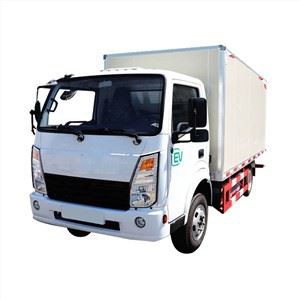What is the Chassis of a Truck?

The chassis of a truck is a critical structural component that forms the backbone of the vehicle, providing support for various parts and holding everything together. Understanding the truck chassis can be key for vehicle enthusiasts, truck owners, and industry professionals. This comprehensive article aims to delve into the chassis’s definition, its components, types, importance, and more. We will also provide practical examples, tips, and a FAQ section to help you navigate this essential aspect of truck engineering.
Table of Contents
- 1. Definition of Truck Chassis
- 2. Components of the Truck Chassis
- 3. Types of Truck Chassis
- 4. Functions of a Truck Chassis
- 5. Importance of Understanding Truck Chassis
- 6. Practical Examples and Tips
- 7. Maintenance of a Truck Chassis
- 8. Common Issues with Truck Chassis
- 9. Frequently Asked Questions
1. Definition of Truck Chassis
The chassis of a truck is the framework or base that supports the truck’s body, engine, and other vital components. It typically comprises a series of metal beams and plates, forming a solid platform on which various vehicle elements rest. The chassis provides both structural integrity and support, ensuring that the truck can handle various loads while maintaining stability and performance.

2. Components of the Truck Chassis
The chassis consists of several key components, each playing an important role in the overall function and capability of the truck. Here are the main components:
2.1 Frame
The frame is the main structure of the chassis, usually made from steel or aluminum. It carries the weight of the truck and its cargo while allowing for flexibility and strength.
2.2 Suspension System
The suspension system consists of springs, shock absorbers, and other elements that reduce the impact of road irregularities, providing a smoother ride.
2.3 Axles
Axles connect the wheels and allow them to rotate, distributing the truck’s weight evenly across the tires.
2.4 Braking System
The braking system is essential for safety, allowing the truck to slow down or stop when necessary. It includes brake pads, discs, and hydraulic lines.
2.5 Steering Mechanism
The steering mechanism enables the driver to control the direction of the truck. It comprises the steering wheel, column, and linkage connection to the wheels.
2.6 Engine Mounts
Engine mounts are used to secure the engine to the chassis, absorbing vibrations while providing a stable platform for the engine to operate.
2.7 Electrical System
The electrical system powers various components, including lights, the ignition system, and other electronic devices.
3. Types of Truck Chassis
There are several types of truck chassis designed to meet different operational needs. Below is an overview of the most common types:
3.1 Ladder Frame Chassis
The ladder frame chassis resembles a ladder, with two parallel beams connected by cross members. This design provides strength and flexibility, making it common for heavier trucks.
3.2 Monocoque Chassis
In a monocoque chassis, the body and frame form a single unit. This design is lighter and often used in smaller trucks and vehicles.
3.3 Modular Chassis
Modular chassis designs allow components to be easily replaced or upgraded. They are highly versatile and used in various applications.
3.4 Tubular Chassis

Tubular chassis are made from tubular steel or aluminum, providing strength with a reduced weight. They are often used in racing and specialty vehicles.
4. Functions of a Truck Chassis
The truck chassis performs several critical functions, including:
4.1 Structural Support
The chassis provides the primary structural support for the entire truck, allowing it to withstand the loads and forces acting on it.
4.2 Stability
By distributing weight evenly and maintaining balance, the chassis ensures the truck remains stable during operation.
4.3 Shock Absorption
The suspension system within the chassis absorbs shocks and vibrations from the road surface, contributing to a smoother ride.
4.4 Load Carrying
The chassis is designed to carry significant loads, allowing trucks to transport goods safely and efficiently.
5. Importance of Understanding Truck Chassis
Understanding the truck chassis is crucial for various reasons:
5.1 Safe Operation
Knowledge of the chassis allows drivers and operators to understand how to handle and maintain the vehicle for safe operation.
5.2 Maintenance
Recognizing the components of the chassis can help in performing regular maintenance and identifying potential issues, preventing breakdowns.
5.3 Customization
A good understanding allows truck owners to make informed decisions about modifications, upgrades, and customization to suit their specific needs.
6. Practical Examples and Tips
6.1 Example of Chassis Use in Different Trucks
For instance, a heavy-duty truck may utilize a ladder frame chassis to support its weight and cargo, while a light-duty delivery truck may use a monocoque chassis for better fuel efficiency.
6.2 Tips for Maintaining Truck Chassis
- Regularly inspect the frame for rust or damage.
- Ensure the suspension components are functioning well to maintain a smooth ride.
- Check the alignment of axles to prevent uneven tire wear.
- Maintain the braking system for safety.
7. Maintenance of a Truck Chassis
Maintaining a truck chassis involves routine checks, lubrication, and timely repairs. Here are some essential maintenance tips:
7.1 Regular Inspections
Perform inspections to check for structural integrity, look for signs of wear or damage, and ensure all components are functioning correctly.
7.2 Cleaning
Cleaning the chassis regularly helps prevent rust and corrosion, particularly in regions with harsh weather conditions or road salt.
7.3 Lubrication
Ensure all moving parts are lubricated to prevent wear and tear, particularly in the suspension system.
8. Common Issues with Truck Chassis
Even with proper care, truck chassis can encounter several issues:
8.1 Rust and Corrosion

Rust can significantly weaken a chassis, leading to structural failure. It is essential to address any signs of corrosion promptly.
8.2 Frame Damage
The chassis can suffer damage from accidents or heavy loads, requiring immediate inspection and potential repairs.
8.3 Suspension Problems
Worn-out suspension components can affect performance, leading to a rough ride and uneven tire wear.
9. Frequently Asked Questions
9.1 What materials are commonly used in truck chassis?
Truck chassis are typically made from materials like steel and aluminum due to their strength and durability.
9.2 How often should a truck chassis be inspected?
It is advisable to inspect the truck chassis at least once a year, or more frequently if the truck is used for heavy-duty purposes.
9.3 Can I modify my truck chassis?
Yes, truck chassis can be modified, but it’s important to consult with professionals to ensure safety and compliance with regulations.
9.4 What is the difference between a monocoque and a ladder frame chassis?
Monocoque chassis combines the body and frame into a single unit for weight reduction, while ladder frame chassis has a separate frame structure that offers greater strength for heavy loads.
9.5 How can I prevent rust on my truck chassis?
Regular cleaning, applying protective coatings, and addressing scratches or dents promptly can help prevent rust.
9.6 What is the lifespan of a truck chassis?
The lifespan of a truck chassis can vary widely depending on usage and maintenance but typically ranges from 15 to 30 years.
